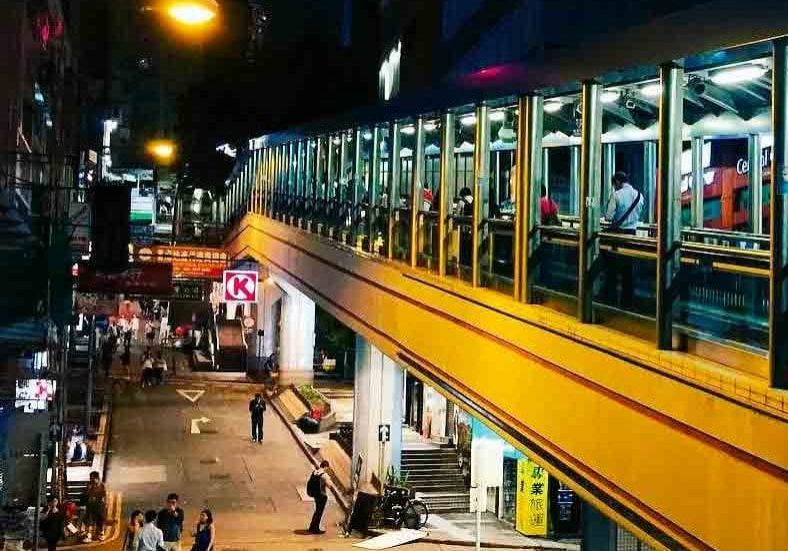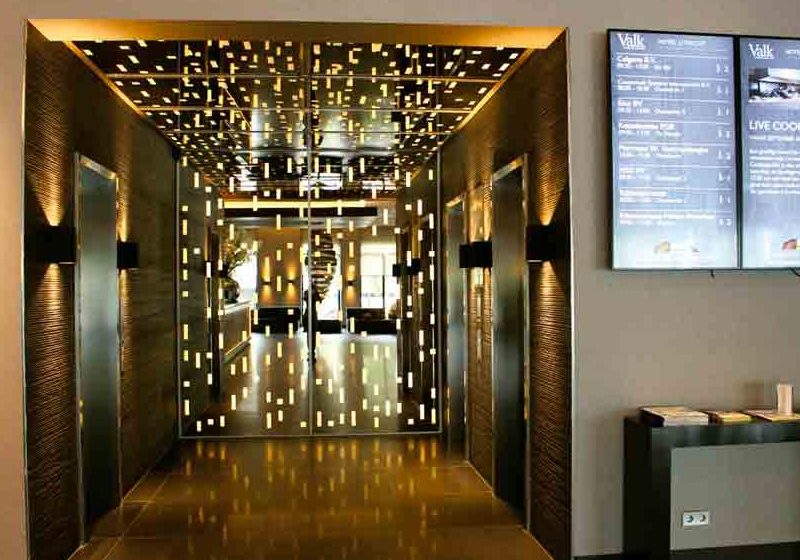Best and Worst Elevator Art and Design of 2017: An Opinion
Nov 1, 2017

Artists use humble conveyance to portray a range of emotions, from confining to liberating.
At the 2017 Whitney Biennial at New York City’s Whitney Museum of American Art, possibly the most prestigious exhibit of new art in America, curators hung Dana Schutz’s “Elevator” across from the freight elevator. Schutz intentionally framed the canvas of “Elevator” at the exact dimensions of the Whitney freight elevator’s huge doors, and the painting was best viewed, especially on first approach, from the back of the elevator as the doors opened to reveal it. It was optimal to remain on the elevator for a few cycles, the doors opening again and again on Schutz’s work.
Schutz stirred controversy with her other painting at the Biennial, “Open Casket,” an abstract portrait of civil-rights martyr Emmett Till in his coffin with a disturbingly sculptural gouge across the middle. A lot of people protested — some literally — in front of the painting, maintaining it was an act of thoughtless cultural appropriation by a white woman.
Anyone who understands elevators should have protested “Elevator,” too. High art usually does not retread the tired, false narratives of elevator danger, malfunction, claustrophobia, violence and death that we see in movies and television shows. Robert Frank’s photo of an elevator girl in “The Americans,” performance artist/photographer Miwa Yanagi’s “Elevator Girl” series, mmuseumm (a modern natural history museum that initially opened in a vacant Lower Manhattan elevator shaft) nor other elevator-related gallery pieces traffic in false, easy elevator stereotypes or pop elevator fear. Real elevator artists aspire to something more.
High art usually does not retread the tired, false narratives of elevator danger, malfunction, claustrophobia, violence and death that we see in movies and television shows.
It takes a while for the offense to set in. Schutz’s elevator is so chaotic with life that it takes time to resolve into detail (and one had to get out of the freight elevator and stand close). It took two or four minutes until I saw the huge black scarab beetle crawling up the mound of people at the center of the painting. First, I saw the people, crammed in, piled, legs thrown this way and that. The caption said they are fighting, and maybe they are, or maybe they’re just pushing to get a cubic foot of air around their heads. Then, the smaller insects, still grotesquely larger than life; the torn paper on the ground, one piece perhaps a crude drawing of the Apple logo; the woman at the top left who kind of looks like she’s sitting on a toilet with an extra-wide roll of paper spooling out before her; the red-mittened palm pressed against the outside of the elevator car’s glass ceiling; the huge pigeon at top right; the insides of the elevator doors, reflecting machinery in burnished steel on the left and right margins of the painting. Then, finally, the scarab, crying out for interpretation. Ancient Egypt’s totalitarian engineering? The scarab-headed Egyptian god Khepri who helped roll the sun down across the horizon every night?
To make sure her viewers get the point, the caption hanging next to Schutz’s painting identifies “struggle. . .anxiety and alarm. . . the transitional space of the elevator as a metaphor for other social spaces that are at once public and private, intimate and estranging, inviting us to consider our own position or role amid the chaos.” Womb, confessional, coffin. Schutz painted Emmett Till in one box and a bunch of people and insects in another.
Once again, the elevator — the safest form of mechanical transportation in the world, the most ecological in its emissions and effects on urban geography, more liberating than confining, a center of serendipity and small talk —is maligned. That is why Schutz’s “Elevator” is the worst piece of elevator art/design of 2017. It is ugly, it is false, it tells the wrong stories about elevators. There was a real killer at the Whitney Biennial, too: Henry Taylor’s painting of Philando Castile in the car that got him shot dead by a policeman in a St. Paul suburb. In America, cars become coffins tens of thousands of times every year. Elevators don’t.
The police make a cameo appearance in the 2017 best work of elevator art/design, the new “Aerosmith” pinball machine. You’ll hear it when you’re in “Sweet Emotion” mode: “I pulled into town in the police car/Your daddy said I took you just a little too far.” This and eight other songs play as you ride the loops, flip pinballs into a toy box that ultimately offers a “Toys in the Attic” multiball and, on the limited-edition model, sends balls to an upper level with a flipper aimed at tiny elevator doors for the elevator multiball. “Aerosmith” rides a popular new wave of machines that allow you to defer multiballs and lock four, five or six balls to play at once, with the highest bonuses at six-ball levels. To my taste, it is a fast but generous game. But, New York State 2017 pinball champion SJG, known off the scoreboard as Sean Grant, disagrees. SJG thinks the game can be very unforgiving, and argues that the ability to lock and play up to six balls at once allows it to play well for people of all abilities, a greater challenge for the elite but multiballs for the masses, too. And, he thinks the game brings a beautiful art package, especially the animation for elevator multiball.
“Aerosmith” (manufactured by Stern Pinball) is not the first pinball machine with an elevator. Bally’s “Who Dunnit” from 1995 is probably the original elevator-themed pinball machine (solve a murder by collecting clues on different floors of a building), but SJG and other pinball enthusiasts agree that it’s pretty weak. “Aerosmith” also does not have the zaniness of “Medieval Madness” or the faux-historical elegance of “Cirqus Voltaire,” two classics from the 1990s that sit near it in the Sunshine Laundromat, a speakeasy pinball parlor behind laundry machines in Greenpoint, Brooklyn. But, it is elevator-positive.
Dana Schutz, take the G train out to the Greenpoint Avenue station, and take it for a spin. I challenge you to a game.
Get more of Elevator World. Sign up for our free e-newsletter.









